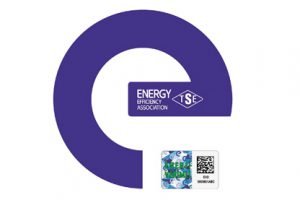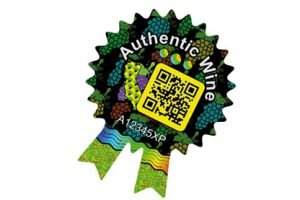
New imaging techniques and combinations of other overt authentication technologies with holograms are producing a sophisticated new generation of optical security devices that combine ease of recognition advantages with significantly enhanced resistance to counterfeits. This enables the identity and distribution of goods to be controlled through an expanded system solution involving security authentication features, tracking mechanisms and investigative facilities.
Global counterfeiting is being driven by several factors: increased industrialization, advanced printing and reproduction technologies, the impact of the internet, vulnerable supply chains, the power of consumerism, weak or ineffectual regional law enforcement and lenient criminal penalties among others. While the EU and North America will always be in the crosshairs of the counterfeiters, it’s in the economic powerhouses of India and China—and Eastern Europe—where counterfeiting has become most prevalent and brand sanctity
faces some of its biggest threats.
So, against this backdrop, it’s no surprise that holography has arisen to become one of the most effective, easy-to-use and accessible brand protection devices, and a frontline weapon in the ongoing war on counterfeiting.
The technology’s ability to incorporate various data forms and product tracking information is becoming increasingly important, and commercially acceptable, with the added bonus of being able to link on-pack product identification with supply chain management, market enforcement and forensic support services.
New imaging techniques and combinations of other overt authentication technologies with holograms are producing a sophisticated new generation of optical security devices that combine ease of recognition advantages with significantly enhanced resistance to counterfeits. This enables the identity and distribution of goods to be controlled through an expanded system solution involving security authentication features, tracking mechanisms and investigative facilities.

Under ISO 12931, which specifies performance criteria and evaluation methodology for authentication solutions, track and trace technology by itself is not a security solution. However, in conjunction with an optically variable device (OVD) such as a hologram, it becomes a potent security solution. Indeed, the technology can help users generate unique sequential, encrypted or random serial numbers, or identify and mark products overtly or covertly either via special self-adhesive labels or directly onto product using a variety of print technologies.

The identity of individual items can be linked to packaging through a unique code, which in turn can be linked to case ID, pallet ID or container ID. The recording of this so-called parent/child relationship between unit pack, carton and pallet is the beginning of an electronic pedigree that allows the item to be tracked and monitored throughout the supply chain—from the production line and packaging through distribution channels to the final end-user. This type of usage can also be used to capture important events in a product’s life cycle—for instance, quality assurance rejects and product returns—creating a flexible database, which offers a unique product history and other business recording benefits.
Of particular value to the brand owner (and a strong financial incentive to make the investment in such systems) is the fact that the information generated at the labeling stage can be linked to the company’s enterprise resource planning (ERP) system; enabling business functions such as manufacturing, supply chain management, finance, projects, HR and customer relationship management to be captured and better managed.
The move towards outsourcing the production of goods might be beneficial in terms of reducing manufacturing costs but it can also impact upon the control of brand security and visibility. Here holograms can be integrated into the supply chain security process to allow companies to maintain control of their products—from the sourcing of labels or proprietary components to the manufacturing and shipment of finished goods.
Holograms can also be integrated with secure web interfaces to help eliminate rogue ordering of products while authorized distributors can pick, pack and ship items in carefully measured quantities to customers, with the product’s movements throughout the supply chain, fully tracked and documented.
Incorporate other data forms
The capacity of modern holograms to incorporate other data forms and product tracking information will become increasingly important as technology pushes forward and the nature of anti-counterfeiting changes with the times. One example of this is image serialization, which can become visible to the naked eye when generated by overprinting or using an optical numbering method. Alternatively, it can remain covert and encrypted, requiring a special reading tool or machine to decipher it.
This enables holograms to be used for an ever widening range of authentication and brand protection roles, linking on-pack product identifi cation with supply chain management, market enforcement and forensic support services. In this way, the identity and distribution of goods can be controlled through a total system solution involving security authentication features, tracking mechanisms and investigative services.

authentication product, DocVAULT
This approach has been adopted by one of the biggest brands in the world of football, Manchester United. Working with security authentication solutions provider OpSec, the English Premier League team has attached a secure OVD label to all its merchandize to protect against the threat of product counterfeiting. The OVD incorporates multiple overt and covert optical security features to enable customs officials, retailers and fans to authenticate the club’s merchandize, while a unique serial number enables traceability back to certified Manchester United licensees. It can also be used by fans to register and authenticate their merchandize online.
Mobile applications are also gaining increasing traction, as demonstrated by an innovative project in Turkey. The country’s Energy Efficiency Association is working with hologram producer MTM on a government-backed scheme to ensure the traceability of certified and accredited energy-efficient consumer products—manufacturers apply energy efficiency labels onto their certified products in a move that’s seeing enhanced hologram product usage in a new field. The combination of high security featured holograms with unique serial numbers in QR codes acts as an effective weapon against counterfeiters as well as a beneficial tool for track and trace purposes through the application of proprietary mobile technology developed by MTM.
New potential
Another interesting development in the area of track and trace holography comes from Holoptica, the US-based embossed hologram producer. The firm has developed a new secure document verification and authentication product called DocVAULT that utilizes a new holographic feature called COMPASS. The combination of holography with a holoQR and compass is opening up new potential as an anti-counterfeit system for documents and products. One application is for smart labels, specifically an Internet of Things (IoT) label that combines anti-counterfeit holographic and other technologies with mobile authentication within a single product.
The label can be used for a variety of consumer goods applications as well as legal and identity documents, providing important product information at a glance, such as nutritional or content information, use by date, manufacturer/ distributor/supplier information, health warnings and safety data alongside compliance and contact details. It can also link to mobile devices as part of a brand loyalty program, facilitating customer feedback and interaction, and accommodating product and service updates. Or, it can offer instant verification and authentication of product or document originality via a mobile phone.
The high rate of tax on tobacco and alcohol products makes them specially attractive to illicit traders and traffickers—the risks are high for the criminals but so are the rewards, so the use of holograms linked to tax stamp initiatives has to be seen as another track and trace application that can deliver all-round benefits.
Here, digital technology is essential to system success and the management of high volumes of data, but coding technologies also have vulnerabilities and in high risk situations a further layer of security is essential. As a result, truly robust solutions must combine material and technologies such as holograms. This sophisticated union of the physical and digital world is essential to ensure that the combined objectives of authentication, sealing and traceability are achieved.
Unquestionably, one of the keys to the success of holograms since they were first adopted for authentication purposes in the early 1980s has been their ability to adapt and change to secure new roles and push the boundaries. We will continue to see more and more innovative technology in track and trace, such as the ability to personalize holograms. This is just beginning to take off and will only mushroom over the next few years, providing far-reaching benefits that will, in turn, create even more interesting applications and expand further the technology’s pivotal traceability role.










